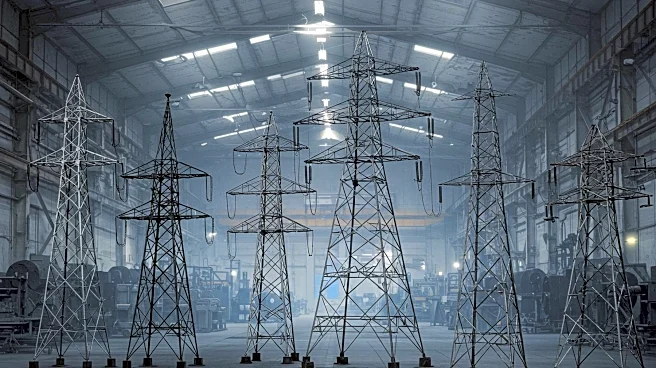What's Happening?
Egypt's Arab Organisation for Industrialisation (AOI), in collaboration with the Ministry of Electricity and Renewable Energy, has inaugurated a new production line for high voltage (HV) and ultra-high voltage (UHV) electricity towers. This initiative aims to localize technology and enhance domestic manufacturing capabilities. The facility, equipped with advanced digital manufacturing machinery, has an initial annual production capacity of 15,000 tonnes, with plans to increase to 30,000 tonnes by the end of 2025. AOI's goal is to achieve self-sufficiency and meet national power tower needs at competitive prices and international quality standards. The electricity ministry supports this initiative as part of broader efforts to transfer modern technology and prioritize local products, particularly in renewable energy.
Why It's Important?
The inauguration of this production line is significant for Egypt's energy sector, as it represents a strategic move towards self-sufficiency in electricity infrastructure. By localizing the production of HV and UHV towers, Egypt can reduce dependency on imports, potentially lowering costs and enhancing the reliability of its power grid. This development aligns with global trends towards renewable energy and sustainable practices, positioning Egypt as a competitive player in the regional market. The initiative also supports the country's economic growth by creating jobs and fostering technological advancements in the manufacturing sector.
What's Next?
Future plans include expanding the production line's capacity to serve regional markets, which could enhance Egypt's role as a key supplier of electricity infrastructure in the Middle East and North Africa. The AOI and the Ministry of Electricity and Renewable Energy may continue to invest in technology transfer and innovation to further improve production efficiency and quality standards. Stakeholders in the energy sector, including policymakers and industry leaders, are likely to monitor the progress of this initiative closely, as it could influence future investments and collaborations in renewable energy projects.

